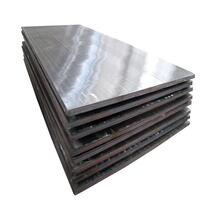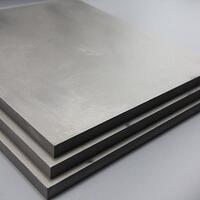1. Introduction
Just 24 hours ago, the 2024 Venice Architecture Biennale unveiled a striking pavilion wrapped entirely in a titanium-clad facade that shifts color with sunlight—an instant viral sensation among design professionals. This moment underscores a growing trend: architects are increasingly turning to advanced metal clad solutions not just for looks, but for performance.

Gone are the days when metal cladding meant simple corrugated steel siding on a shed. Today’s metal clad applications fuse engineering precision with artistic vision—using materials like corten steel plate, zinc metal siding, and aluminum clad stainless steel to create buildings that breathe, age gracefully, and withstand extreme climates.
2. What Is Metal Clad, Really?
At its core, the metal clad meaning refers to a composite material where a base metal is bonded—often through roll bonding or electroplating—to a more corrosion-resistant or aesthetically refined metal. This creates clad metals that combine strength, cost-efficiency, and surface performance.
For example, aluminum clad steel wire leverages the conductivity of aluminum with the tensile strength of steel. In architecture, this concept scales up: a steel plate might be clad with copper, zinc, or titanium to form a durable, low-maintenance exterior.
3. Niche Applications in Modern Architecture
3.1 Corten Steel Facades That Age with Dignity
Corten steel facade systems are no longer just for industrial lofts. Designers now specify corten steel siding for luxury residences and cultural institutions because it develops a stable rust-like patina that eliminates the need for painting. The corten steel siding cost is higher upfront, but lifecycle savings are significant.
Recent projects in Oslo and Portland showcase vertical standing seam metal siding made from corten steel plate, blending raw texture with minimalist geometry.
3.2 Zinc and Copper for Timeless Elegance

Zinc clad roof and zinc clad dormer elements offer subtle luster and self-healing properties. Over decades, zinc forms a protective carbonate layer that resists weathering—ideal for heritage-sensitive districts.
Similarly, copper siding evolves from bright orange to deep green, making it a favorite for high-end metal clad houses. Paired with pac clad standing seam roof systems, these materials create cohesive, sculptural envelopes.
3.3 Aluminum-Clad Composites for Lightweight Performance
Aluminum clad stainless steel and stainless clad aluminum hybrids are gaining traction in coastal and high-humidity zones. These clad metal meaning-compliant composites resist salt corrosion while maintaining the sleek look of a steel facade.
In skyscrapers, aluminum clad sheet panels are used in standing seam facade systems that integrate solar shading and rain-screen ventilation—key for LEED-certified metal clad buildings.
4. Beyond Aesthetics: Functional Metal Clad Systems
Not all metal clad applications are visible. Aluminum clad pipe insulation protects HVAC lines in hospitals and labs, while metal clad electrical wire (including cu clad wire and aluminum clad steel wire) ensures fire resistance in high-rise conduits.
Even structural elements benefit: pac clad column covers and pac clad coping add both protection and polish to exposed steel frameworks. Meanwhile, metal clad insulation wraps around ducts and tanks in industrial facilities, combining thermal efficiency with mechanical durability.

5. Material Innovation Driving the Trend
The rise of alloy clad options—like 2024 T3 clad aluminum or 7075 T6 clad aerospace-grade sheets—shows how cross-industry tech is influencing architecture. Even inconel 625 weld overlay techniques, once reserved for jet engines, now protect marine-grade stainless steel plate in tidal zones.
Suppliers are also offering custom-cut metal sheet cutting services for 316 stainless steel plate, 6061 T6 aluminum plate, and corten steel plate, enabling architects to prototype complex geometries without waste.
6. Sustainability and Longevity
A well-designed metal clad wall or metal clad roof can last 50+ years with minimal upkeep. Materials like zinc metal siding and corrugated steel facade panels are 100% recyclable. Plus, reflective finishes on colorbond standing seam or pac clad HWP systems reduce urban heat island effects.
Unlike traditional stucco or wood weatherboard, metal weatherboard alternatives—such as exterior corrugated metal siding—won’t rot, warp, or attract pests.
7. Conclusion
From titanium-clad pavilions in Venice to steel clad houses in the Rockies, metal clad is no longer a utilitarian afterthought—it’s a strategic design choice. Whether it’s a zinc facade aging gracefully or aluminum clad stainless steel enabling net-zero buildings, clad metals are proving that performance and poetry can coexist on the same wall.
Our Website founded on October 17, 2012, is a high-tech enterprise committed to the research and development, production, processing, sales and technical services of ceramic relative materials such as Metal. Our products includes but not limited to Boron Carbide Ceramic Products, Boron Nitride Ceramic Products, Silicon Carbide Ceramic Products, Silicon Nitride Ceramic Products, Zirconium Dioxide Ceramic Products, etc. If you are interested, please feel free to contact us.
